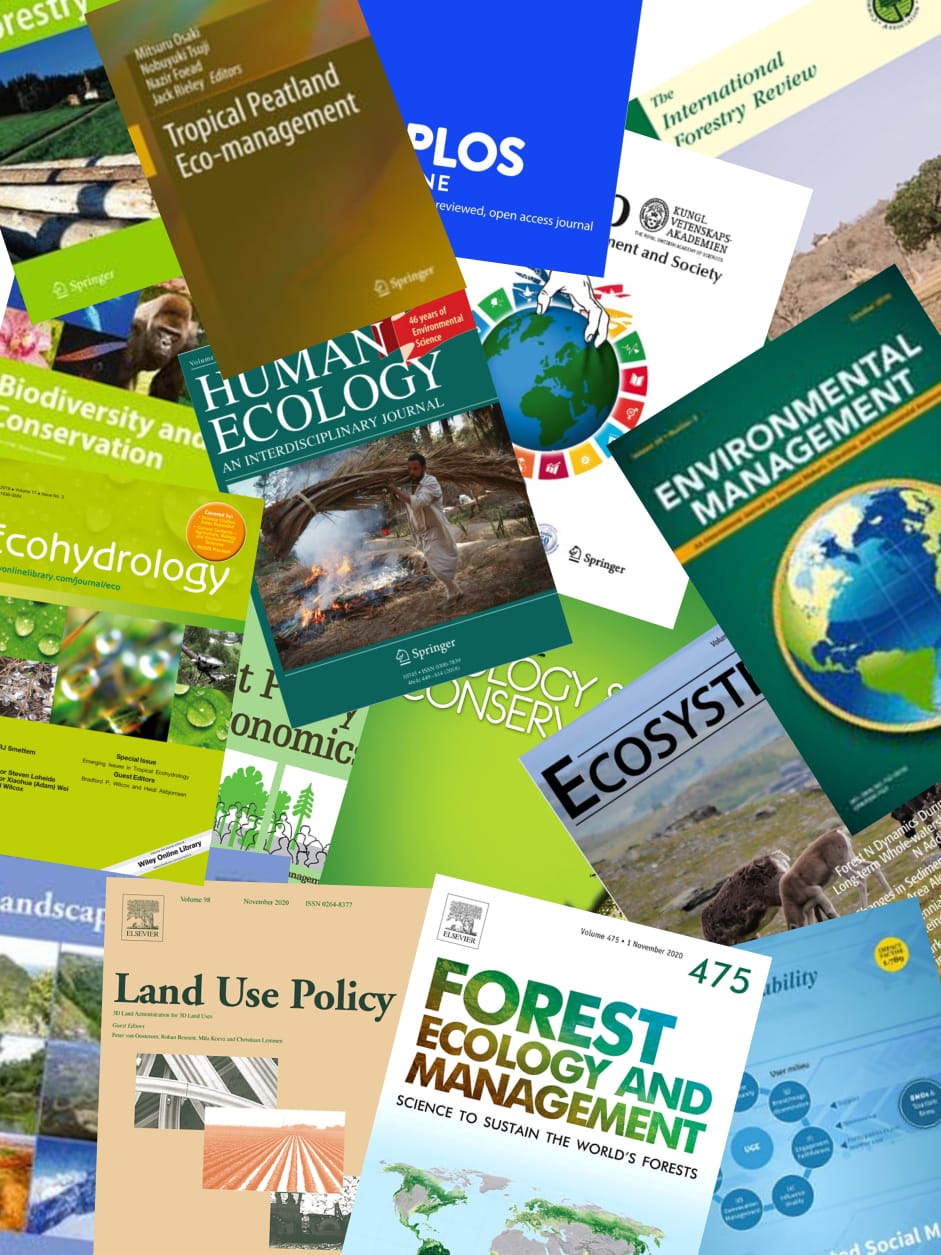Disturbances in tropical peat swamp forests greatly impact water transport into the atmosphere through evapotranspiration (ET). However, transpiration (T) and evaporation (E) are affected by disturbances in different manners. Based on eddy fluxes and meteorological data, we used three methods to estimate T and E separately at three tropical peat swamp forest sites with different degrees of disturbance. Each method utilizes the i) water use efficiency, ii) linear relationship between ET and gross primary production, and iii) conductance of T and E in each. The results showed that the conductance method was the most reasonable for estimating T and E. The other two methods could not be applied because of the large variance in the water use efficiency and lack of a strong relationship between ET and gross primary production, among other reasons. Inter-site comparisons suggested that lowering the groundwater level (GWL) reduced T, but T subsequently recovered. This was likely because the trees acclimated to the dry environment. There was no clear difference in E among the three sites under conditions of lower GWLs. The mean T/ET in the almost undisturbed forest (0.60) was greater than that at the burned site with sparse vegetation (0.21). Overall, El Nino events decreased both T and E during the dry season at all sites. In the almost undisturbed forest, T and E decreased by 1.14 and 0.27 mm day(-1), respectively. During El Nino events, precipitation decreased to near zero, fire sizes increased, and the downward photosynthetic photon flux density decreased. The decreases in T and E were mainly due to attenuation of incoming radiation by the fire-induced haze. In addition, significant soil desiccation due to lowered GWL impaired root water uptake, resulting in decreased T. In addition, E was decreased by soil surface drying. However, the direct effect of further atmospheric drying on E and T was small during the dry season. Our results show that both drainage and El Nino events reduced T and E in different manners.
View source

